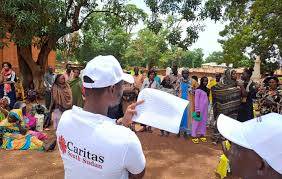**Inter-Agency Update: Sudan Situation – in Arrivals to South Sudan (21–30 December 2024)**
The ongoing conflict in Sudan has led to a significant increase in the number of people crossing the border into South Sudan during the final days of December 2024. According to an inter-agency update, tens of thousands of refugees and returnees arrived in South Sudan between December 21 and 30, further straining the country's already limited resources and humanitarian infrastructure.
This surge is attributed to the intensification of violence in Sudan, which has displaced millions since the outbreak of hostilities in April 2023. As South Sudan grapples with its own challenges, the rising number of arrivals underscores the urgent need for coordinated humanitarian interventions.
### Surge in Arrivals
During the reporting period, an estimated 25,000 people arrived in South Sudan, bringing the total number of arrivals since the conflict began to over 1.5 million. Among them are Sudanese refugees, South Sudanese returnees, and third-country nationals. The majority of new arrivals entered through border points in Northern Bahr el Ghazal, Upper Nile, and Unity states, where reception facilities are already overwhelmed.
Many of the new arrivals report harrowing journeys, marked by violence, hunger, and exposure to harsh weather conditions. Families are arriving with few possessions, often in poor health, and in urgent need of food, water, shelter, and medical assistance.
### Humanitarian Response
The inter-agency humanitarian response, led by the United Nations High Commissioner for Refugees (UNHCR) and supported by South Sudan's government and non-governmental organizations (NGOs), has been working tirelessly to address the immediate needs of the arrivals. However, the scale of the influx is outpacing available resources.
**Reception and Registration:**
Border reception points have been set up to register new arrivals and provide initial assistance. However, the rapid increase in arrivals has led to overcrowding and delays in registration processes. Agencies are working to expand capacity and improve the efficiency of these operations.
**Food and Nutrition Assistance:**
The World Food Programme (WFP) and its partners have been providing food assistance to newly arrived families. Emergency food rations, including cereals, pulses, and cooking oil, are being distributed. Malnutrition screening and treatment for children and pregnant or lactating women are also ongoing.
**Health Services:**
Mobile clinics have been deployed to border areas to provide medical care to new arrivals. Common health issues include respiratory infections, malnutrition, and waterborne diseases. The International Organization for Migration (IOM) and the World Health Organization (WHO) are leading efforts to enhance healthcare services, including vaccination campaigns to prevent disease outbreaks.
**Shelter and Non-Food Items:**
Temporary shelters have been established at reception sites, but they are insufficient to accommodate the growing number of arrivals. Agencies are distributing essential non-food items such as blankets, mosquito nets, and cooking utensils to help families cope with harsh conditions.
### Challenges and Gaps
Despite these efforts, significant challenges persist. Limited funding, logistical constraints, and insecurity in some border areas are hampering the response. Key gaps include:
1. **Overcrowding:** Reception centers and transit sites are operating at full capacity, leaving many families without adequate shelter.
2. **Health Risks:** The lack of clean water and sanitation facilities increases the risk of disease outbreaks, particularly cholera.
3. **Food Insecurity:** Food stocks are insufficient to meet the growing demand, putting many families at risk of hunger and malnutrition.
4. **Protection Concerns:** Vulnerable groups, including unaccompanied children, women, and the elderly, face heightened risks of exploitation, abuse, and gender-based violence.
### Regional Implications
The influx of refugees into South Sudan has broader implications for the region. As one of the world's least developed countries, South Sudan is ill-equipped to handle a crisis of this magnitude. The situation also threatens to exacerbate tensions between host communities and refugees, particularly in areas where resources are already scarce.
The United Nations and regional bodies such as the Intergovernmental Authority on Development (IGAD) have called for greater international support to address the crisis. They stress the importance of a coordinated approach that includes humanitarian assistance, conflict resolution in Sudan, and long-term development support for South Sudan.
### Calls for International Support
Humanitarian agencies are urgently appealing for increased funding to scale up the response. The 2024 South Sudan Regional Refugee Response Plan, which aims to provide life-saving assistance to refugees and host communities, remains severely underfunded.
In a joint statement, UNHCR and WFP emphasized the need for solidarity: “The people of South Sudan have shown incredible generosity in welcoming those fleeing conflict. However, they cannot do this alone. We call on the international community to step up support to prevent a worsening humanitarian catastrophe.â€
### Path Forward
As the crisis continues to unfold, humanitarian actors are focusing on scaling up emergency assistance while advocating for durable solutions. This includes strengthening infrastructure at reception sites, addressing food and water shortages, and ensuring the safety and protection of vulnerable groups.
The situation also underscores the need for a political resolution to the conflict in Sudan. Without peace, the flow of refugees and returnees into South Sudan is unlikely to abate, further compounding the humanitarian crisis.
### Conclusion
The surge in arrivals from Sudan to South Sudan highlights the devastating impact of protracted conflict and the urgent need for coordinated humanitarian action. While agencies are working tirelessly to provide relief, the scale of the crisis requires sustained international support.
As 2024 comes to a close, the plight of refugees and returnees serves as a stark reminder of the human cost of war and the collective responsibility to support those in need. With increased funding, political will, and global solidarity, it is possible to alleviate the suffering and build a path toward stability and resilience in the region.


